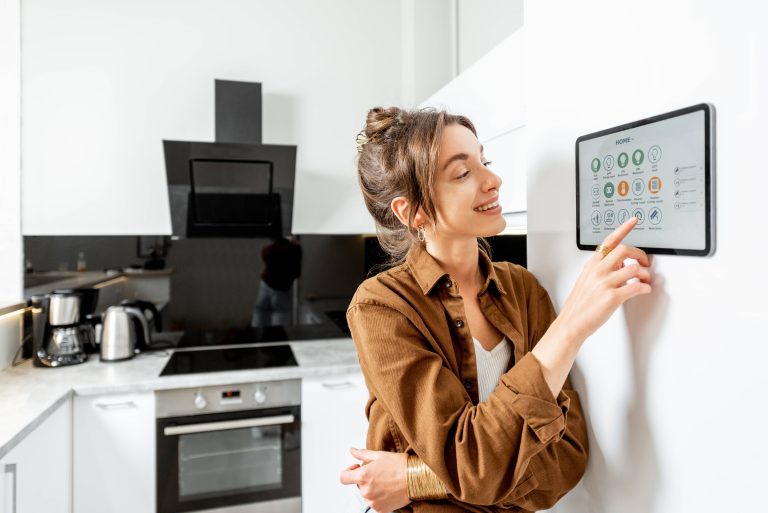
In recent years, the evolution of smart home technology has been nothing short of revolutionary. The internet of things (IoT) has connected our appliances, lighting, and security systems to the web, giving us control at the touch of a button or through voice commands. But the next frontier of this revolution is perhaps the most exciting yet: augmented reality (AR).
Understanding Augmented Reality
Before diving into how AR can enhance your smart home, it’s essential to understand what augmented reality is. Unlike virtual reality (VR), which immerses you in a completely digital world, AR overlays digital elements onto the real world. This augmented experience is often facilitated through smartphones, tablets, or AR glasses.
AR can transform everyday interactions by overlaying useful information, providing interactive interfaces, and creating immersive experiences that blend digital and physical spaces seamlessly. In the context of smart homes, AR has the potential to redefine how we engage with our environments, improving not only functionality but also entertainment and comfort.
The Smart Home Intersection with AR
1. Enhanced Home Design and Decoration
One of the immediate tangibles of AR in smart homes lies in home design and interior decoration. Platforms like IKEA’s Place or Amazon’s AR View allow homeowners to visualize furniture and decor in their actual spaces before making a purchase. You can see if that new coffee table matches your living room aesthetic or if a new piece of artwork will fit perfectly above your mantle, all without leaving the house or making a single measurement.
2. Improved Maintenance and Repairs
Imagine pointing your phone at a faulty appliance, and an overlay appears, guiding you through troubleshooting steps or connecting you to a virtual assistant. Companies are beginning to leverage AR to provide in-depth diagnostic tools and step-by-step repair guides for various home gadgets. This can reduce the need for professional visits, allowing homeowners to resolve issues promptly and cost-effectively.
3. Smart Appliances and AR Integration
Smart appliances such as refrigerators, ovens, and washing machines are increasingly coming equipped with AR capabilities. For example, an AR-enabled fridge can assist you in keeping track of your groceries, providing you with nutritional information about different food items, and even suggesting recipes based on the ingredients you have at hand. Additionally, an oven might feature an AR overlay that ensures you’re cooking your meal at the right temperature for the right amount of time, providing both novices and seasoned chefs with precise guidance.
4. Interactive Control Panels
AR can turn any surface into a potential control panel for your smart home devices. By using AR glasses or your smartphone, you can walk through your home and interact with digital interfaces overlaid on physical objects. Adjust the thermostat by pointing at it and dragging a temperature slider, change the lighting by swiping at a virtual control on the wall, or view weather updates and calendars projected onto a kitchen countertop—all these interactions can become second nature with AR.
5. Home Security and AR
Security is a paramount concern in any home. AR can enhance your security system by providing real-time monitoring overlays. For instance, if you receive an alert from your smart security system, you can use AR to project a real-time video feed of the area in question onto a wall or a table, giving you a clearer idea of the situation at a glance. Additionally, AR overlays can alert you to windows or doors that have been left unlocked or open, offering peace of mind whether you’re home or away.
6. AR in Home Entertainment
The entertainment potential of AR within the smart home ecosystem is vast. Video games and immersive experiences are already benefiting from AR technologies, but there are more avenues to explore. Consider movie nights where information, trivia, or even interactive elements are overlaid onscreen or around the room. Smart TVs with AR integration could allow viewers to access on-demand content via gestures, voice commands, or even by tapping on interactive menus projected through their smartphones or AR glasses.
Similarly, AR can transform social experiences at home. Hosting a virtual gathering where digital avatars of your friends and family share your space can enhance long-distance connections. This blend of physical and digital presence can make guests feel like they’re part of your home, even when they’re miles away.
The Future of AR in Smart Homes
The application of AR in smart homes is only scratching the surface of what’s possible. As AR technology continues to evolve, it will inevitably become more seamless, integrated, and accessible. Imagine a home where AR overlays guide you effortlessly from one task to another, making your living experience smoother and more interactive than ever before.
The marriage of augmented reality and smart home technology offers a glimpse into the future: an interconnected, intuitive, and engaging home experience where the physical and digital worlds coexist harmoniously. As AR tools become more sophisticated and widespread, homeowners can look forward to a future where their living spaces are not just smart but profoundly interactive and intelligently designed for comfort and entertainment.
In the years to come, it’s clear that the smart home revolution, coupled with the transformative power of AR, will redefine how we experience our living spaces, making them smarter, more efficient, and far more enjoyable. The age of AR-enhanced smart homes isn’t merely a sci-fi fantasy; it’s an impending reality, ready to enter our homes and elevate our lifestyles.
So, whether you’re tech-savvy or a novice just dipping your toes into the smart home waters, AR offers exciting and practical enhancements that promise to make everyday living more engaging, efficient—and certainly more fun.







